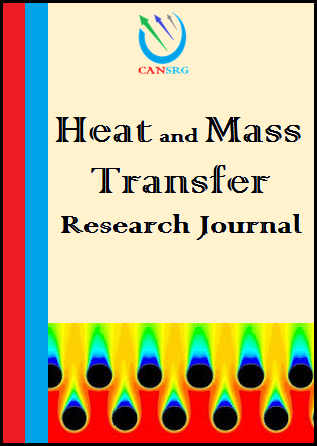
CanSRG

Heat and Mass Transfer Research Journal (HMTRJ)
Research Article
Evaluation of Crossflow Heat Exchanger Modules in Sequential and Simultaneous Orientations
1Department of Mechanical Automotive and Materials Engineering, University of Windsor, Windsor, Canada.
2Sanden International (U.S.A.) Inc., Plymouth, MI, U.S.A.
Submitted: September 21, 2019; Revised: December 12, 2019; Accepted: December 13, 2019
Abstract
Heat exchangers are the key components in automotive, residential and industrial heat transfer applications. These are employed in thermal management systems, as well as heating, ventilation, air conditioning and refrigeration systems. In this research, two distinct heat exchanger modules, sequential and simultaneous, are modeled to evaluate their heat transfer. The simultaneous heat exchanger module is used as the replacement candidate of the conventional sequential module to further enhance convective heat transfer. The study uses three-dimensional domains to resolve flow and heat transfer in air-to-liquid crossflow orientation. A finite volume method based ANSYS FLUENT computational fluid dynamics (CFD) code is used to conduct the numerical simulations. First, fundamental laminar heat transfer and flow parameters are investigated in both modules of flat tube heat exchanger (FTHX). Next, the minichannel heat exchanger (MICHX) is employed in replacement of the conventional FTHX. Water with temperatures of 65℃ (MT-HX) and 95℃ (HT-HX) for the core Reynolds number range of 350≤Re≤2250 is cooled by crossflow cold air temperature of 25℃ and velocity of 6m/s. For an identical module size, the simultaneous module heat transfer outperforms the benchmark sequential module. The MICHX module provides even more heat transfer over the FTHX module.
Keywords
Crossflow; Heat transfer; Sequential and Simultaneous modules; Laminar flow; Flat tube; Minichannel.
Downlaod Full Text >>
This work is licensed under a Creative Commons Attribution 4.0 International License.